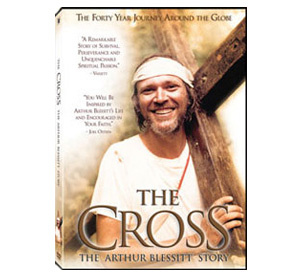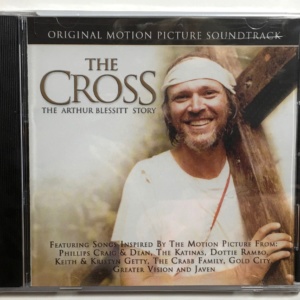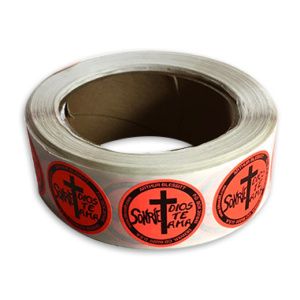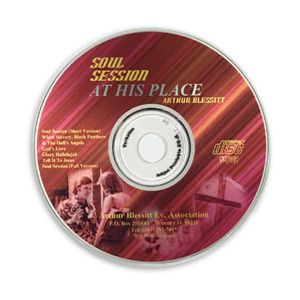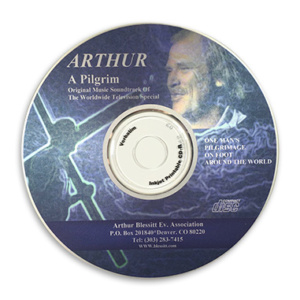Tips for Walking
Have you ever been taught to walk? Oh yes, you might reply—but have you? Really. Perhaps you were taught how to sit or stand after your first few baby steps. How you step, how you walk is all left to you. But Walk? Perhaps only models in our society are taught how to walk-but that type walking won’t work on the road. Ha! Now this is “the Blessitt thing”.
Go out and walk normally through soft dirt, sand or anywhere that leaves your footsteps. Go back and photo them, study them.

Type A
1. Your heels come down wrong – notice how your shoe wears away on one side of the heel.
2. As your weight comes down and you push off, all your bones and ligaments are stressed because they are not properly in line.
3. If your feet are spread apart you use only part of your foot on the forward thrust as you step forward.
4. Your shoe twists and causes extra sole wear.
5. The mis-stepping leaves you a bit off balance.
6. All this causes you to burn extra energy which makes you tire.

Type B
With type B your entire bone, muscle and ligament structures are all in line. There is no twisting or tension at each stress point. Your body flows. When you step down on your heel it strides evenly, not on one side. As your weight and step moves forward the front of your foot now smoothly takes the weight and gives you a thrust forward. You push off with the ball of your foot, toes, and ankle as your leg now produces power. This is all one smooth, natural movement. It takes less energy, gives more power and causes less stress on the body system.
So remember, relax, walk relaxed, relax your shoulders, chest, arms, and then walk with your body straight up – not slumped over. Keep your feet straight and step forward completely coming off the front of your foot, now take in the beauty of your journey.
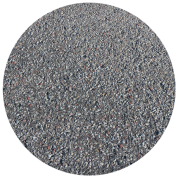
1. Smooth track, sidewalks, paved roads
Walk in full stride with feet pointed straight ahead stepping onto your heel, then on to the ball of the foot and pushing off through the toes. It should be no problem.
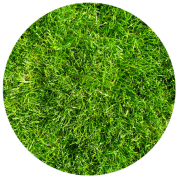
2. Grass, vines, tree limbs, rock
Must change stride so that instead of lifting the back foot just above the ground, you must at the end of your step lift the back foot up several inches, move it forward still up then place it down not dragging the foot. This prevents the foot being caught in a vine, etc… and causing you to trip and stumble or fall. Remember up, forward then down – don’t drag.
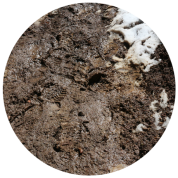
3. Ice, wet trail, wet grass, small gravel on the ground or pavement going down hill
Step forward more with your leg than your front foot. Do not push off with the front of your foot as you normally would because this would cause the shoe to slip. You need all the traction you can get, so step with the entire foot on the surface. Also when you step down, put the entire foot down at once, this again gives full foot traction. Not just the heel. In this way of walking you must shorten your stride to get full traction on each step. It also is very important so that if the gravel on the steep decline begans to slip your other foot is there quickly to keep you up because your stride is short.

4. When walking anywhere not familiar to you
You must keep watching where you step – all the time. Should someone be walking with you, talk but do not look. A rock sticks up and you step on one side of it and sprain your ankle. The ground surface may be loose and you slide, there is a hole in an unexpected place, a stick across the path and you trip. There is a bottle you step on or a can, or a wet spot. The sidewalk may be chipped out or a manhole with the top off. (A friend walking with me once stepped into a manhole and fell 10 feet into the pit just beside me!)
Remember on unknown surfaces to watch your step. Then stop and observe the beauty. Then walk on watching your step not the view around. Accidents happen at the most unexpected moments.
Walk at a good steady pace. Learn endurance! On long walks consistency is more important than speed. Some people go so fast that they burn out soon. Set a pace you can keep up hour after hour, day after day. Remember, even walking around the world is simply taking one step at a time. I’ve had people to walk with me and, wow, they go fast at first but by the second or third day they are exhausted or ready to go home.
I was once invited to a special reception that was given for me in the home of a Hollywood actor. After the dinner as I chatted with the Hollywood crowd a man said to me “I’m into sports and I run everyday.” I replied, “And where are you going?” Tears filled his eyes as he said, “Nowhere! I just run around in circles! You walk, but you walk around the world, Jesus called you, you have a purpose, you love God, you love people, I just go in circles that’s my life.”
Tips for Buying Walking Shoes and Boots
Advice For Buying Walking Shoes – Boots You go into an air conditioned shoe store – the sales person measures your foot, width and length, says your size, then brings you a walking shoe or boot. You put it on and it fits – ½ inch clearance for toe; the sides of your foot are pressing comfortable against the sides of the shoe, you walk around on the carpet and buy it!!! You then set off on a long hike-you are in trouble!!! Big Time.
- Feet in the cool are smaller than in the heat. As you walk your feet swell in the heat as does your hands – just notice your ring finger as you walk.
- Say your size is 10E in men’s size, the shoes are basically all the same cut but not every person’s foot is wide at the same point at the base of the little and big toe. The ball area of the foot varies from person to person. The shoe begins to cut into the toe at the wrong place for many people (me). Your little toe will blister and so will your big toe and in time you will develop bunions there or at the base of the big and little toes. I have to get a shoe normally two to three sizes bigger than the sales person recommends! Don’t be sold by a sales person who is only taking a temporary job or working on commission and is truly not a foot expert. Get the shoe you want.
- Should the shoe not be deep enough it will blister the top of your toes or foot. You need space up there.
- Always wear the size sock you will be wearing when you walk, when you shop.
- Get the shoe a bit big. You can get different type sock thicknesses to fill up space. Also, tighten or loosen your shoe laces for just the right feel – not too tight not too loose. From a cold mountain morning to the hot valley you may adjust your laces to compensate for the increase in size of your foot.
- Keep your feet dry. I always now use shoes with Gortex lining to give complete waterproofing. Should you have to cross a stream, take off shoes, put them on your belt, wade over, dry feet and then put on your dry shoes. Should you be doing a lot of wading and must get feet and shoes wet, take along an extra insole and socks and keep dry. When you get to dry land, change and hang wet insole and socks on your backpack or belt. Change into the wet to wade again. Jam cloth or newspaper into the wet shoes to absorb the wetness, even a few minutes of this, changing paper several times will do wonders.
- My idea of a shoe is this: our feet were made for walking. Perfectly designed by God for use in the perfect peaceful, sinless, Garden of Eden, Adam and Eve sinned then came, thorns, sweat, work, etc… People had to protect their feet from slippery rocks, sharp objects, thorns, gravel, nails, glass, razor blades, etc…and with carrying weight we need additional support and with slippery rocks, roads and mud we need grip and traction. We need in a walking shoe support, protection, traction, endurance, and comfort. The perfect shoe has all four plus good looks and that is not to be overlooked. I think we need to let our feet act normally – as barefoot yet protected in the shell called a shoe.
- I recommend a leather shoe or mixture with fabric.
- When you stop for a rest at least a few times a day, take off your shoes, socks and let them air. Your feet stay dry and comfortable. Perhaps a dash of powder.
- You may want to change shoes with the walking condition. I sometimes use a very soft and comfortable shoe for mostly city and paved walking. The sole is soft, but does not last long. Soft flexible soles allow rock, etc…to push into your foot that in time can cause serious problems for the foot, stone bruises, etc… Also they are not safe against nails, thorns, and glass. I prefer now a well built, solid shoe with a long endurance outer-sole, protective under-sole from upward pressure like sharp stones and uneven surfaces.
- Shoes with excellent grip is crucial. It is sad you can’t test walk before you buy. Some of the latest models have grips along the sides and front of the shoe. It is great and helpful in wet, uneven, muddy, rocky surfaces.
- Get a top of the line, best shock absorbent insole! I almost never wear the insole that comes with the shoe. Why, they are too hard. I take the insole out and put in a new insole that takes up to 50% of the shock from the foot. This is the only thing that makes a hard sole shoe workable for long distance walking and especially when carrying a heavy load also. Walking on hard surfaces pound on the foot sending shock to the ankles, knees, hips, back and neck. This can cause immediate pain to old injures or develops new damage. Absorb the shock in the insole, not the body!
- Remember keep plenty of room inside – keep feet dry. Absorb the shock, protect the foot and remember ‘whatever rubs will blister!’
- Cleaning. There are so many different types of shoes that require different treatment. I won’t get into the subject.
- Weight. I tend to get the heavier shoe rather the ultra light. My expertise is distance and endurance not speed. Nice leather, all terrain type shoe with good soles and support is a bit heavier than the speed walking type shoe. I have walked further around the world than anyone and shoe weight has been for me no problem. The extra pound of comfort I gladly carry.
- Price. “You get what you pay for!” As a rule, the most expensive is best. Ha! Some of you didn’t like to hear that but to me it is true. Get the best. Look around at all the podiatrists and sports injury specialists and know people ruin their feet. In a foot there are 26 bones. All are connected by tissue ligaments and muscle. It is possible to grow older, and still by the grace of God be pain free as I am today. But remember – “a bad fit will ruin a good shoe”. One sees walking shoes in a cheaper store for $40. It looks good and just down the way are shoes that look similar for $125 to $250. But looks are not the same as quality. Think of the cost of pain, and doctor bills. Also, how much do you spend in a year not just to eat food (you can get food cheap at short order burger places plus all the fat grease free) but you go to a nice place for quality food well prepared for a pleasure. The money you spend for the best shoe is well worth the price of comfort over pain. On the hiking trail just look at the people putting on Band-Aids and taking care of blisters.
“A farmer bought some mail order work boots for $40, he put them on and went to the field. When he returned home that evening his wife noticed two big holes cut out of each shoe at the little toe. Oh, how could you do that, and ruin those expensive shoes? I didn’t ruin them, he replied with a grin. Each of those holes is worth $40!!!!!!!!” - Soles. I have had good, soft sole comfortable shoes that just do not last! One popular brand I have worn last only 150 miles on the road and they cannot be resoled. Other shoes last a long time but are just hard and without good traction and inflexible. One must get the proper blend of comfort, production and durability and then remember the shock absorbent insole.
“When He washed the disciples feet He sat down and said, “If your Lord and Teacher has washed your feet, you also ought to wash one another feet– happy are you if you do it” – Jesus of Nazareth
Survival Tips
Water
The’ essential – water!
Water is not only essential but in many places on earth is also the main source of disease and harmful metals.
‘Travelers Diarrhea’ is the common curse of travelers. Other far more serious diseases are also water-borne. I will not list these, only how to prevent them. Check Center for Disease Control at http://www.cdc.gov/.
- Bottled water from good brands are often available, however make sure the bottle is opened in your presence or open it yourself! Often unscrupulous stores or restaurants refill the bottles with local contaminated water and re-sell it to unsuspecting travelers. Check the top before you allow someone to open it.
- Don’t use ice in your drinks as it is made from the same water you don’t want to drink.
- All local water should be considered contaminated so don’t use it to brush your teeth in and be careful not to get it in your mouth while bathing, and in some very bad places don’t get the water in your eyes.
- Water needs to be boiled for 10 minutes to be safe.
- Use iodine tablets to put in your water to kill disease and make it safe. Follow the directions carefully. They are available at your pharmacy or camping store. They work well but the taste is ugh! Ha.
- We use NSA Potable Water Treatment Unit. It is small, light, and works. Years have proved it with us.
A great idea is ‘Sip Master’ patented water purifier. It’s like a sipping straw, about 8 inches long, they have one for domestic use and one for overseas use. Easy to carry in your purse or backpack. Excellent for personal use.
Water to make tea and coffee must also be purified.
Many streams and rivers need the water purified as they are contaminated with disease and parasites.
Always check information about rivers and lakes before you wade, swim or bathe as many have horrible eye and body disease. I normally carry a water bottle on my waist or two if necessary.
Should you walk or be where no water is available, you must plan ahead. Take enough water, get someone to accompany you in a vehicle with supplies or motorbike or even a bicycle. I’ve used all these ways.
“He who belives in Me out of his heart will flow rivers of living water” – Jesus of Nazaerth
Glass of Milk
Good healthy milk; What’s the problem in most Third World countries? Disease, contamination and improper handling and refrigeration.
- Milk should be boiled 10 minutes to purify.
- Milk products are unsafe also, local; cheese, yogurt, cream, whipped cream, and ice-cream!
- Once my wife and I were waiting in the hot heat in Gambia, Africa, for a flight to England. The waiting travelers were eating the soft ice-cream. It looked good but I knew the potential problem and sure enough by the time the flight arrived in England about 30 people on the flight were very ill and medical staff had to evacuate them!
- Powdered and evaporated milk is safe when used with purified water.
“Desire the pure milk of the word of God” – Peter the Fisherman
Food
- All meat, poultry, and seafood must be well-cooked and served while hot! Avoid ground meat as it is more easily contaminated within.
- Road-side meat that is cooked over a fire and freshly killed may be much better than meat in a nice hotel kept too long in a refrigerator, spoiled and not well-cooked.
- Avoid pork in all cases.
- No! Avoid cold buffets, frozen desserts, custards and mayonnaise!
- No! To all those fresh uncooked vegetables or salad on your plate, or at the buffet.
- All vegetables should be well-cooked and served hot.
- Often we get well-done meat and open our own can of vegetables and put it on our plates!
- Many times on trips we go to a shop and get canned goods, open it in our room or carry it in our 4-wheel drive or car so we can have good food. Maybe not hot but good road food.
we can have good food. Maybe not hot but good road food.
What’s the problem with fresh fruit and vegetables? Food handlers from the field to the kitchen with unclean hands. Most places have no toilet facilities in the field and they handle your food.
The food handlers in the restaurant kitchen don’t wash properly after the toilet. They handle fresh contaminated meat, then handle fruit and vegetables without washing. Also many of the farms use human and animal waste for fertilizer. The worm eggs and other parasites are poured onto the vegetables or fruit.
I must say that fresh fruit and vegetables that would not be eaten in the country uncooked are now being imported into North America and Europe and these are eaten raw. This is one of the reasons and the main one I believe, that horrible outbreaks of food-borne diseases are present in these modern countries. Look at your local food store and see where the green onions and lettuce etc. are coming from. Would you eat them raw there? Well, why here? It’s one of the hidden secrets of government and business. Read what the government itself recommends about eating food in Third World countries and then see that the food is imported with no warning.
“I am the living bread which came down from heaven, if anyone eats of this bread he will live forever.”- Jesus of Nazareth
Fruit and Juice
- Eat only fruit with skin, that you peel. Do not touch with your hands the part you have peeled as this will contaminate it.
- Often in restaurants local water is added to the fruit juice to dilute it into lasting longer.
- Should the person cutting up the fruit for the juice have unwashed hands or the fruit skin is touched, the juice is not safe.
- Fruit used in a cake or pie that is baked should be fine.
- It looks good but that freshly cut fruit at the buffet could be your downfall.
“I am the vine, you are the branches, he who abides in me, and I in him, bears much fruit.” – Jesus of Nazareth
Vitamins I Take
- Vitamin E – 1,000 iu daily It’s the best thing for healing cuts, burns or scratches. Just pour pure Vitamin E over the wound. It helps scars and infection especially in tropical conditions./li>
- Also I put pure Vitamin E oil nightly on my face, neck, hands and arms; all over exposed to the sun./li>
- Lecithin – 1,200 mg daily.
- Beta Carotene, Vitamin A – 25,000 iu daily
- Royal Jelly – 500 mg Pure Royal Jelly daily
- ‘Ultra Juice’ tm – 2 tablets daily, Twenty Eight whole fruits and vegetables. I take this on the road especially where fresh vegetables and fruits are not available or are unsafe to eat.
I will let you look up the value of these vitamins for the body. But for me it’s well-worth the small space it takes up in the backpack.
Spiritual Vitamins: A few verses from the Bible and prayer mixed with love to others keeps your soul well!
“Your Father who is in heaven will give good things to those who ask Him.” – Jesus of Nazare
Rain
- In some warm weather places I just ignore the rain when walking as the raincoat, etc. produces as much sweat water as the rain! Or I put on the raincoat and wait for the storm to pass over or just get in a dry place until it passes over.
- If you don’t have rain gear put some plastic or cloth around your shoe top, to prevent water pouring into your shoe.
- For me, good rain gear has pants that will go over your walking shoes or boots to keep out water. A raincoat made with the new materials available today that reduce sweat, not rubber etc. The jacket should have a hood that will roll up when not in use. You can get the pants, jacket and hood that will roll up and fit into it’s own strap about the waist bag.
- Remember, get rain gear that is light, breathable, waterproof and easy to carry.
“Your Father in heaven makes His sun rise on evil and good, and sends rain on the just and on the unjust.”
Jesus of Nazareth
Cold
- I have walked in the Arctic Circle and Antarctica as well as other ‘cold’ places.
- Dress in layers so as you warm up walking, or the temperature changes you can shed clothes to prevent sweating and over-heating.
- I also carry a small glove that is small for inserting in a very cold weather glove. This way when you warm up you can take off the big glove and wear the small one.
- A coat that you can take off and turn into a bag you can wear around your waist is a good idea.
- The key thing is to determine the temperature range beforehand and prepare for the worse.
- Take rain gear – to get wet and cold could lead to hypothermia or even freezing.
“The love of many shall grow cold.” – Jesus of Nazareth
Skin Care
- I use sunscreen ‘Shade 45’ on all exposed parts of my body all the time as a protection for skin damage and skin cancer prevention.
- After leaving the sun I wash it off with soap and water.
- I rub in pure Vitamin E oil each night or some other good moisturizer.
- Have your skin checked regularly at least once a year, especially if you are exposed to the sun a lot.
- For personal pleasure I swim at or after sunset to avoid the sun, I get enough walking.
“The sun shall not strike them, nor any heat, neither shall they hunger or thirst and God shall wipe away every tear from their eyes.” – John, Follower of Jesus speaking of heaven
Heat
- When possible try to walk as early as you can and rest during the heat of the day, 12 to 2:30 pm and then walk in the afternoon till late. I did this on the long walks across Africa and from Mexico to South America and other places.
- Cover your skin, don’t expose it. The Arabs in the desert are wise with their covered bodies. It keeps one cooler than direct skin exposure to the sun and it also prevents water evaporation.
- I normally wear long pant and long sleeve sun repellant shirts.
- I’ve found the desert hat ‘French Foreign Legion’ type hat the best, it repels heat on top and hangs around the face and neck for protection. It has a long bib to shade the face and the face and neck wrap is detachable with velcro. The hat works well also by protecting the neck and face in cold winds.
- Drink plenty of water! How much? Well, in humid climates you sweat a lot and can tell you are losing water, but in dry climates like the desert the water evaporates as fast as it is sweated, often one’s shirt does not even get wet. But be warned, the water loss is just as great. If you are not urinating regularly, you are drinking too little. Drink more until you urinate regularly. If your urine gets darker, drink more water until it clears up. Make sure your urine is clear and regular!
- Two tips: Watch your walking pace so you don’t overheat. Stop and rest if possible in the shade, if no shade, rest anyway.
- When in the heat a lot I recommend use of ‘Prickly Heat Powder’, it’s different from regular powder.
“Jesus being weary from His journey sat by the well and said ‘give me drink.’ – Jesus of Nazareth
‘Best’ It is best to go in your travels, walking, and living with God. I have walked around this earth and have always known Jesus was with me, always. In the rain, cold, heat, war, jail, pleasure, beauty, danger, joy, the presence of God is constant, unchanging, and beautiful. I totally recommend that you invite Jesus who lived without sin, loved and helped others. But was crucified for our sins on the cross, rose again on the 3rd day and then ascended to heaven to come into your life. Begin following Jesus, love God and love, care for and help other people. In spite of all the pain, injustice and suffering in this world let the beauty of God be shown in you to others. Let us care for each other, lift up not destroy, forgive and have no vengeance. Be at peace not causing conflict. End war and welcome all. Let us be at peace and live in harmony with nature and each other. Smile and reach out your hand to care, find someone, (everyone) to love.
Right now you can talk to Jesus, ask Him to forgive your sins as you repent, trust Jesus as your Savior and commit to follow Him – give your life to God. Be filled with the Holy Spirit just now!
I trust these tips and things I’ve learned will help you in your travels and witness for Jesus. Peace and blessings.
Pilgrim followers of Jesus,
Arthur and Denise Blessitt
Luke 18:1



